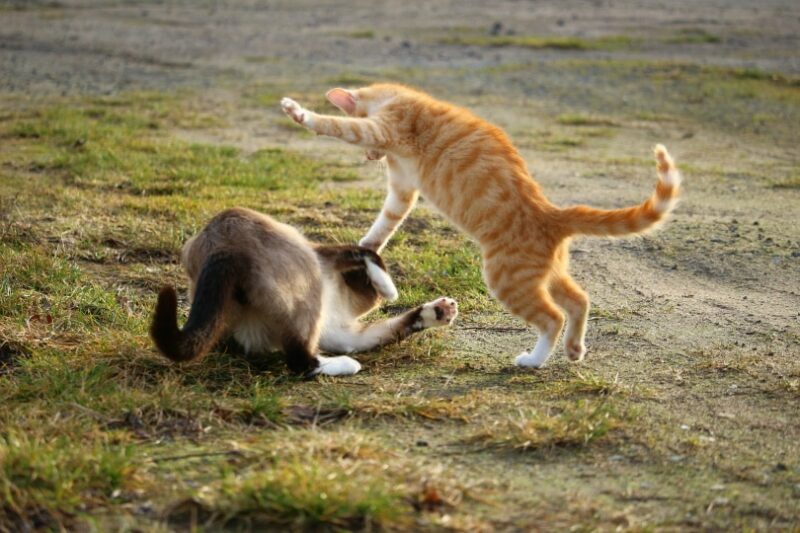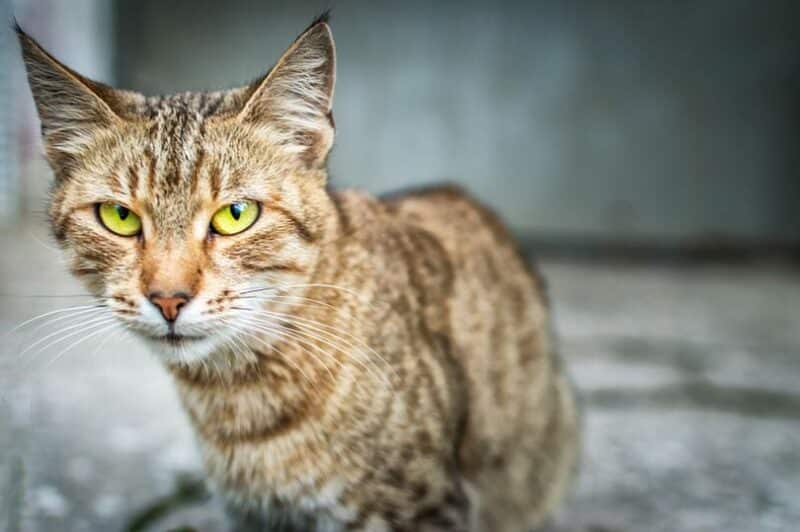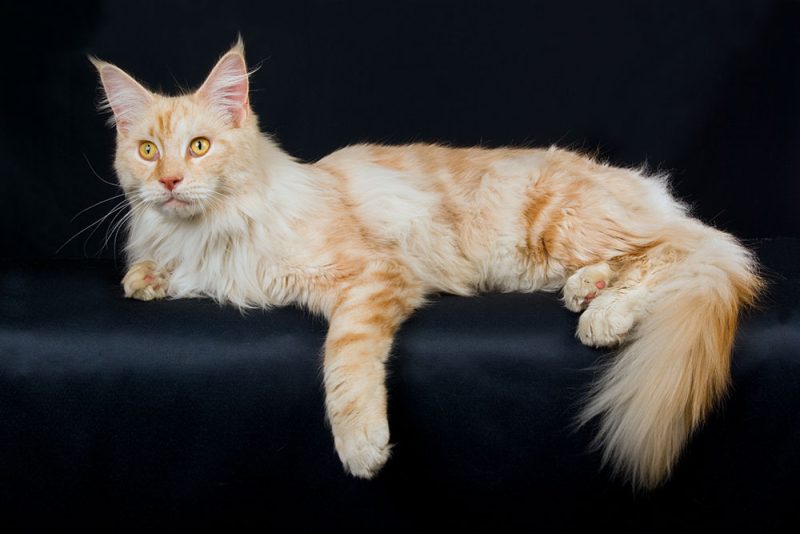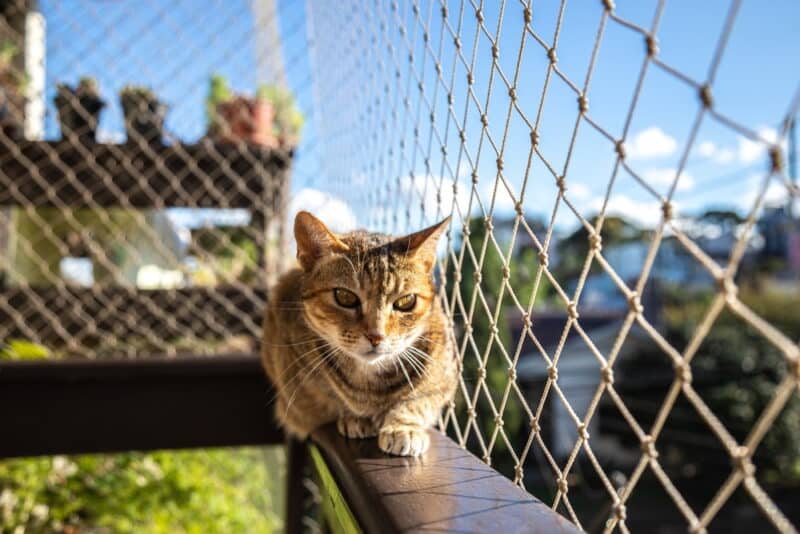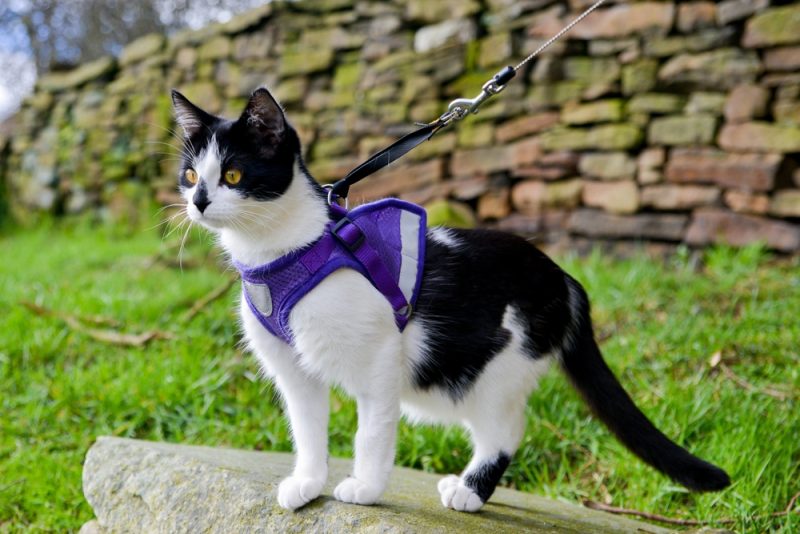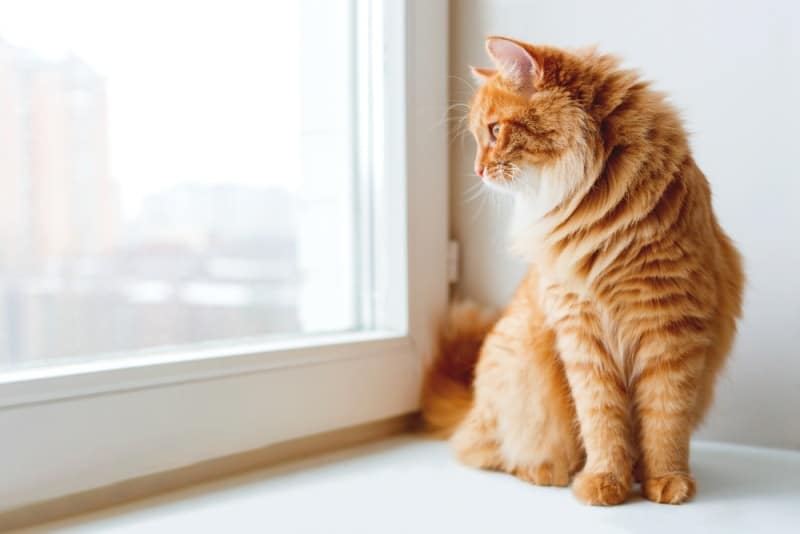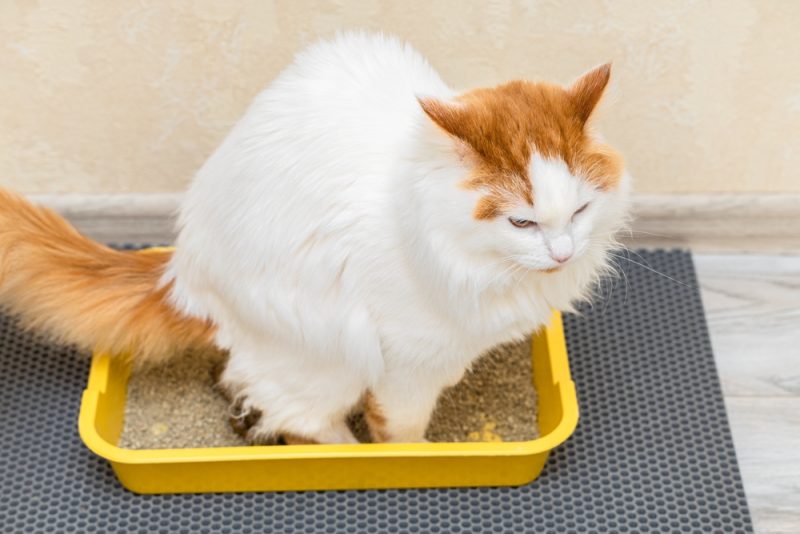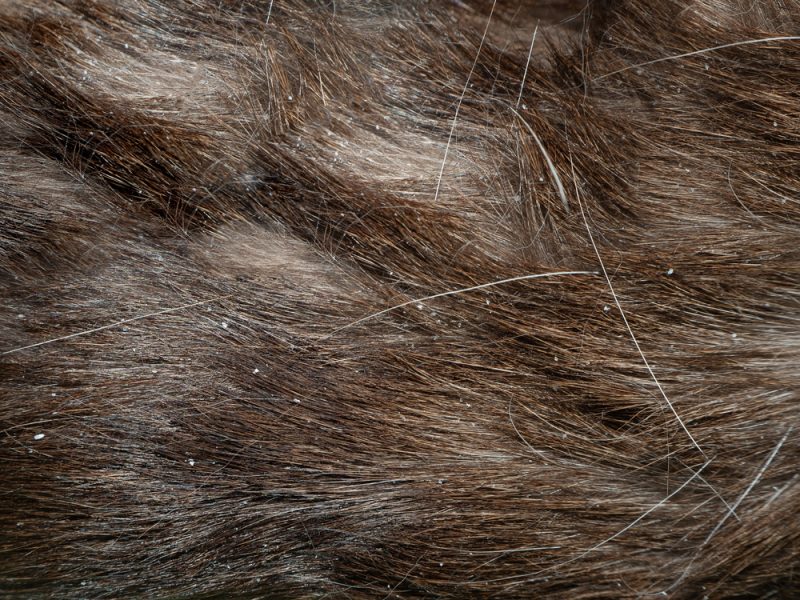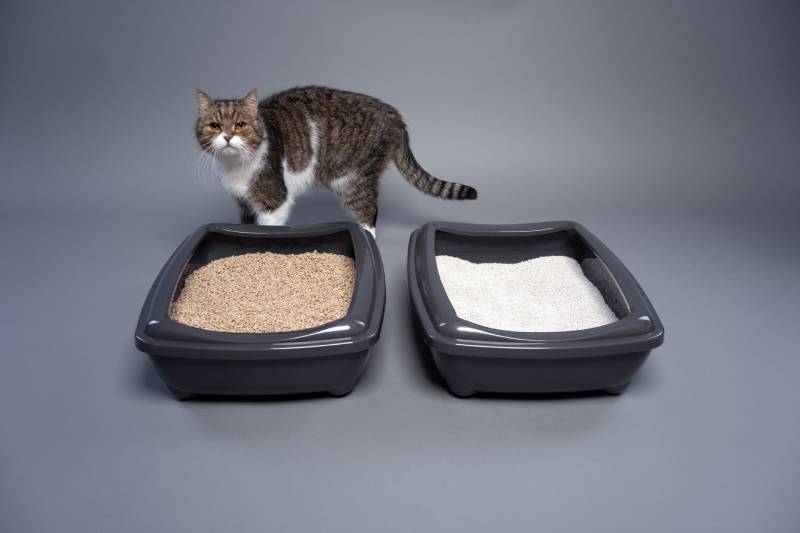In this article
Cats seemingly never grow up. Even the eldest of cats is known to have a little fun now and then, swatting a fly or two when relaxing outside. Play is intrinsic in cats, and for good reason. It helps cats develop physical coordination and problem-solving skills. It’s also through play that cats can grow their predatory instincts and sharpen their hunting skills. It’s normal if play is a bit rough at the beginning, but if it doesn’t improve over time or it leads to injuries you might have to take other actions.
However, it’s a whole other story when your older cat starts playing a little too rough with the younger ones. There’s always the possibility they could hurt them, and as a proud parent of an adorable kitten, it’s only natural for you to worry. But should you really? Keep reading to find out.

The 4 Possible Reasons Why Your Older Cat is Too Rough with Your Kitten
There are plenty of reasons why your older cat might be too rough with the younger ones. Here are some of them:
1. Errant Upbringing
Play behavior varies from one cat to the next; while some cats play gently, others don’t. The primary reason is how the kitties in question were brought up. Cats removed too early from their mothers and littermates never learn how to play gently with others. Without an adult to show them the way, the cats may grow up to become rough players, as they didn’t get to learn bite inhibition.
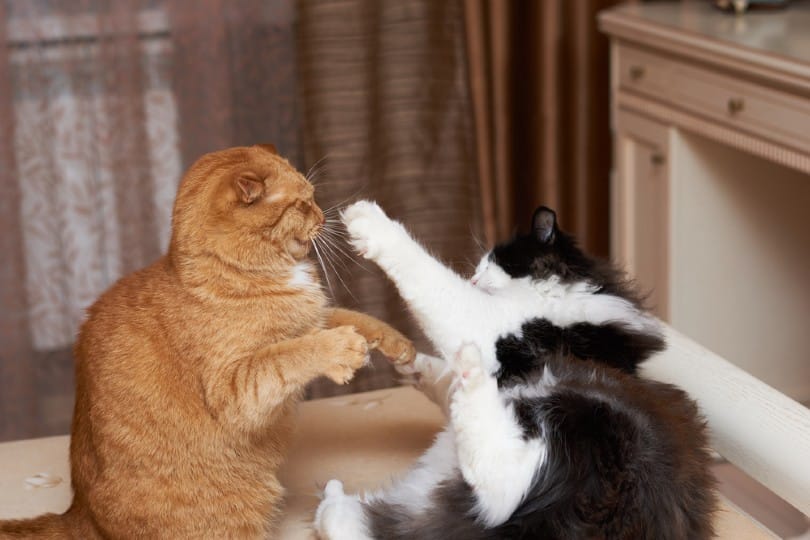
2. A Lack of an Outlet for Expression
Like humans, cats also need to blow off some steam. Without an outlet for expression, cats may actively seek others to play with. It’s not uncommon for them to play too aggressively to unleash all the welled-up tension inside them. This is perfectly normal, and rough playing should reduce when your cat gets adequate amounts of physical exercise and mental stimulation, so they can burn up any excess energy.
Playing is an important part of keeping your cat mentally and physically engaged, and a great toy will make it much easier. We like Hepper's Catnip Stick Toys because they're sturdy enough to handle intense play and completely filled with organic catnip. You'll love the fun range of pastel colors and your cat will enjoy the prey-like shape!
At Catster, we’ve admired Hepper for many years and decided to take a controlling ownership interest so that we could benefit from the outstanding designs of this cool cat company!
3. Mock and Overstimulation
As mentioned earlier, cats never outgrow their playfulness. As such, they’ll still exhibit their kitten-like behavior well into adulthood. The only difference is that their bodies are now full-grown and could cause actual injury to kittens. Some cats just get overstimulated during playtime and find it hard to control themselves, leading to minor rough outbursts.
While you might want to punish your cat for the aggressive behavior, this will only increase their anxiety and may worsen their behavior. Instead, you might want to consider alternatives such as redirecting their behavior to a toy.
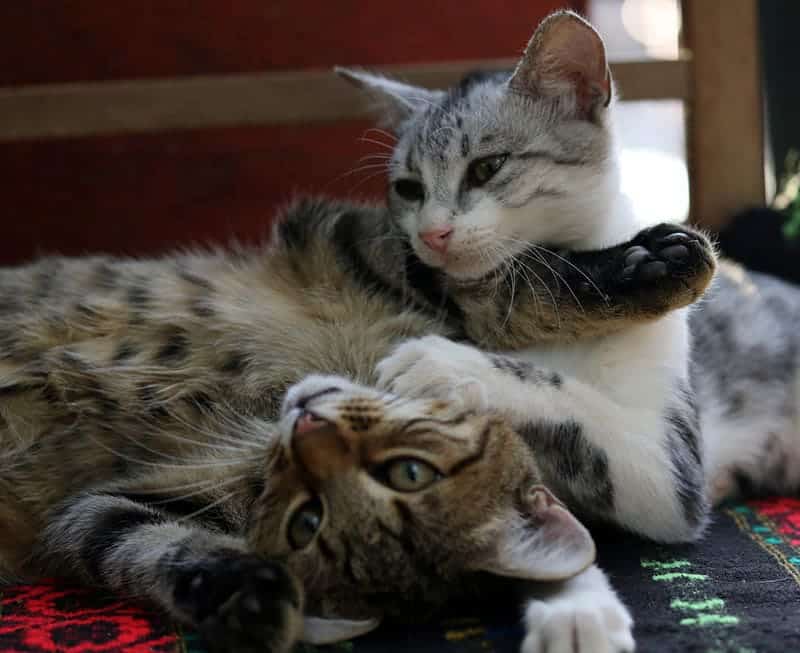
4. Territorial Competition
When you introduce a new kitten into the household, it’s normal for your current cat to feel threatened. This behavior that may resemble jealousy can play out as overly aggressive play-fighting. The cat’s first instinct is to think that the newcomer is invading their territory, especially if the introductions have been done too quickly. This is usually accompanied by hissing, growling, and swatting, which should be differentiated from playing. Less direct ways of expressing territorial disputes can also be toileting outside of the litter box, often because there aren’t enough litter boxes for the two cats.

Should I Be Worried?
It’s easy to think that your cat might one day kill your precious kitten. While the cat might bite and kick your kitten and even cause serious skin and soft tissue injuries, they’re generally not aiming to kill them. In most cases, the rough playing will wear out, but you might have to proactively help your cat adjust to their new housemate.
Will My Older Cat Ever Accept the New Kitten?
After a couple of weeks of rough behavior, you might think that your cat will never accept the new kitten. Don’t be discouraged yet. Cats take different times to adjust to new kittens. While others might become the best of pals in a few days, others might take months.
This depends on the cats’ individual personalities and temperaments, gender, early socialization, and previous experience, as well as the length and timing of the introduction process, which needs to be slow and gradual. In rare cases, the cat might completely reject the kitten. If you need guidance on training your cats to get used to each other, we suggest you speak to a professional trainer or a vet.
If you need to speak with a vet but can't get to one, head over to PangoVet. It's an online service where you can talk to a vet online and get the advice you need for your pet — all at an affordable price!

How Long Will It Take for My Cat to Get Used to the Kitten?
Cats can sometimes take quite a bit of time to accept new feline companions. No two cats are the same, and the adjustment period varies from cat to cat. Felines are known to be particular about their territory. Fearful and territorial cats may isolate themselves when you introduce a new kitten to your home, hiding, toileting outside of the litter box, and eating less.
Like any other friendship, your cat will take some time to build a solid relationship with the kittens. It can take several weeks to months for your cat to fully accept the new kitten. Just be patient and do not rush the process, while ensuring plentiful resources for both, and hopefully, before you know it, they’ll be bosom buddies.

Introducing Your Cat to a Kitten in 2 Steps
Just putting both cats in the same room might not end up well, especially for the younger kitten. Doing so may only trigger the older cat’s territorial response and lead to aggression that may injure the kitten or set the wrong pace for their relationship from the very beginning. Consider taking this approach instead.
Remember to be patient, observe your cats’ body language, and take things slow:
1. Start with Scent Exchange and Indirect Interactions
When you get your new kitten, set them up in a room where the other cat does not have access to. Let the kitten settle in for a few days or longer, depending on their personality, and get used to you first. Ensure they have their own set of bowls, litter boxes, toys, scratch posts, beds, and everything else they may need.
Now take their blanket or another object with their scent and place it with the older cat for a few hours, and vice versa. The goal is that both cats become aware of each other’s existence in a calm and safe way without seeing each other. After they have responded well to each other’s scent, get them to see each other, but over a glass door or a kid’s gate, so they can familiarize themselves but not interact with each other. Feed them both and praise their calm and relaxed behavior. This step is crucial and should not be rushed. When both cats are eating or grooming themselves, not fussed about the other one, and this is consistent, you can proceed with the next step. Also, use pheromone diffusers to provide reassurance for both cats.
2. Supervise All Interactions
After the previous step has been completed successfully, you can proceed with letting your two cats interact with one another in the same room. Make sure to have plenty of tasty treats and toys, you can use to reward calm behavior or to redirect any hissing. Let the cats choose their pace and do not force them to interact. Keep the area quiet and peaceful, and ensure plenty of safe hiding spots if one or both cats start feeling overwhelmed. Initially keep the interactions brief, 10-15 minutes at a time, and repeat them a few times per day. It’s best to play vigorously with each cat before the introductions, as being tired will make them more accepting of one another.
Do this over and over again until the two cats get used to each other. Be patient and let the bond grow with time. Don’t forget a bit of rough play is sometimes part of the process, especially between younger cats.

Final Thoughts
Don’t get too worked up when you see your older cat being a little rough with the kittens. This can sometimes be perfectly normal and won’t likely result in injuries, but be ready to interfere with toys and other means of calm distraction. Slowly introduce the cats to each other using the steps described above. If there is any evidence of territorial dispute or aggression, revisit their resources and see if they are lacking something, while also consulting with a vet or a feline behaviorist. If introductions are done appropriately and gradually, it’s quite likely that the two cats will slowly get used to each other with a little bit of time.
Featured Image Credit: rihaij, Pixabay
